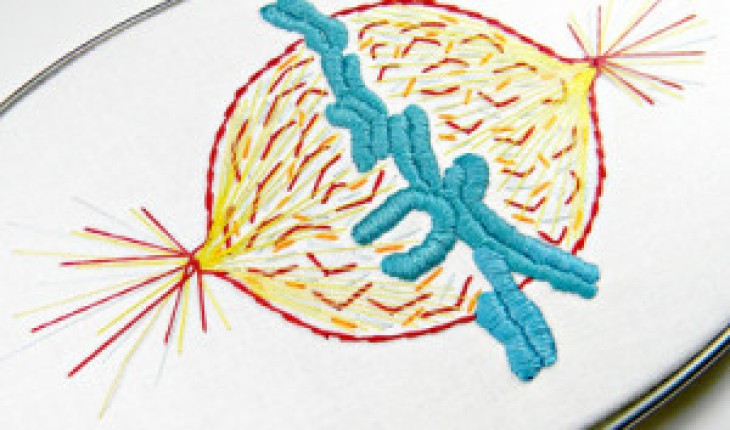Photo by Hey Paul Studios
By Andrea Ford (Stanford Medicine)
Imagine being a forty-six-year-old woman pregnant with her third child, whose amniocentesis follow-up shows that half her cells carry male chromosomes. Or a seventy-year-old father of three who learns during a hernia repair that he has a uterus. A recent news feature in Nature mentioned these cases as it elaborated on the spectrum of sex biology. People can be sexed in a non-straightforward way and not even be aware of it; in fact, most probably aren’t. As many as 1 person in 100 has some form of “DSD,” a difference/disorder of sex development.
The simple scenario many of us learned in school is that two X chromosomes make someone female, and an X and a Y chromosome make someone male. These are simplistic ways of thinking about what is scientifically very complex. Anatomy, hormones, cells, and chromosomes (not to mention personal identity convictions) are actually not usually aligned with one binary classification.
The Nature feature collects research that has changed the way biologists understand sex. New technologies in DNA sequencing and cell biology are revealing that chromosomal sex is a process, not an assignation.
As quoted in the article, Eric Vilain, MD, PhD, director of the Center for Gender-Based Biology at UCLA, explains that sex determination is a contest between two opposing networks of gene activity. Changes in the activity or amounts of molecules in the networks can sway the embryo towards or away from the sex seemingly spelled out by the chromosomes. “It has been, in a sense, a philosophical change in our way of looking at sex; that it’s a balance.”
What’s more, studies in mice are showing that the balance of sex manifestation can be shifted even after birth; in fact, it is something actively maintained during the mouse’s whole life.
According to the Nature feature, true intersex disorders, such as those from divergent genes or the inability of cellular receptors to respond to hormones, yield conflicting chromosomal and anatomical sex. But these are rare, about 1 in 4,500. For the 1/100 figure, they used a more inclusive definition of DSDs. More than 25 genes that affect sex development have now been identified, and they have a wide range of variations that affect people in subtle ways. Many differences aren’t even noticed until incidental medical encounters, such as in the opening scenarios (the first was probably caused by twin embryos fusing in the woman’s mother’s womb; the second by a hormonal disorder).
Furthermore, scientists now understand that everyone’s body is made up of a patchwork of genetically distinct cells, some of which may have a different sex than the rest. This “mosaicism” can have effects ranging from undetectable to extraordinary, such as “identical” twins of different sexes. An extremely common instance of mosaicism comes from cells passing over the placental barrier during pregnancy. Men often carry female cells from their mothers, and women carry male cells from their sons. Research has shown that these cells remain present for decades, but what effects they have on disease and behavior is an essentially unstudied question.
This is an uneasy way to think about bodies in a social world where sex is still defined in binary terms. Legal frameworks rely on being able to classify someone as male or female, and social status is often determined by the sex on a birth certificate. Parents and doctors of intersex infants face thorny ethical questions about potential surgeries, therapies, and how to raise the child. The implications of better understanding and socially recognizing DSDs are huge.
As our understanding of biology continues to advance, our social, legal, and medical systems will have to evolve as well. Check out the Nature feature for a discussion of these problems, as well as more interesting research into the biology of sex.
– See more at: http://scopeblog.stanford.edu/2015/02/24/sex-biology-redefined-genes-dont-indicate-binary-sexes/#sthash.3q9VIpng.dpuf




